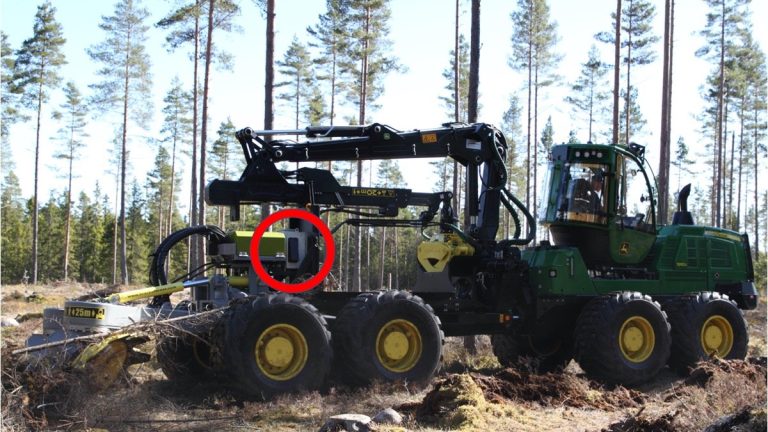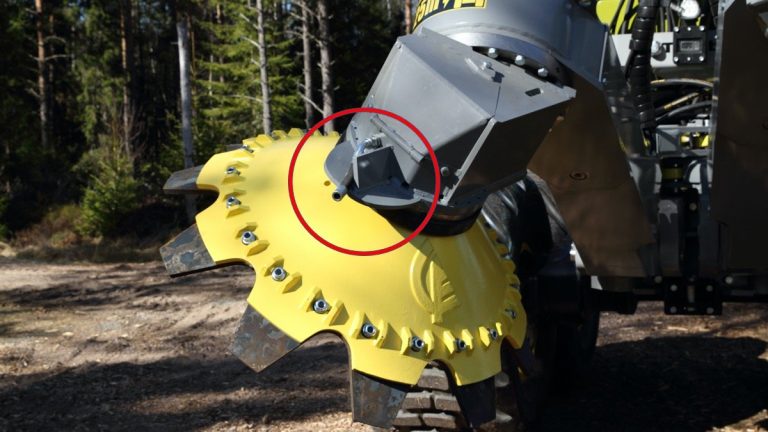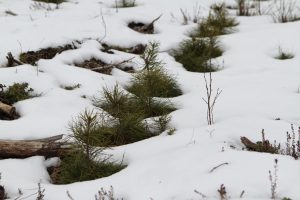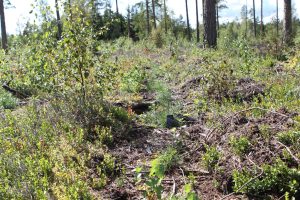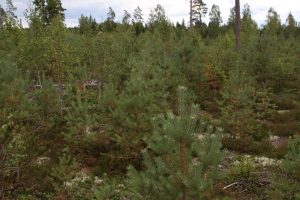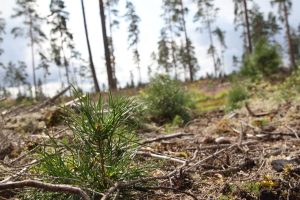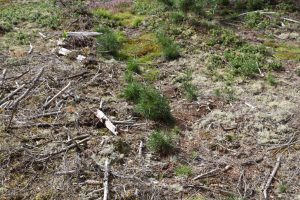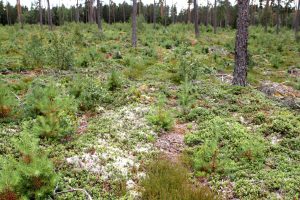In an article from May last year, we wrote about mechanized sowing in the forest. The conclusion was that it could be a good alternative under the right conditions. The other day I visited two sites that have been sown in 2012 and 2017 and that I have been following since then. Here is an update:
Sowing the forest
In general, dry soil is better suited for sowing as there is less risk that competing vegetation obstruct the seedlings. And as dry soil is more suitable, species that can cope with that are of course most suitable to sow. In the northern hemisphere that means e.g., Scots Pine (Pinus Silvestris) which was the case on the sites that I have followed here in Sweden.
The equipment
Sowing could be made by hand, which I believe is the most common method worldwide. Many scarifyers could be equipped with sowing equipment meaning that you can scarify and sow in the same operation.
The machine in the article mentioned above, is a Bracke Trencher equipped with a Bracke seeder. The machine that sowed the sites I am following, is a John Deere 1910G with the same type of trencher and seeder but the 2-row version.
This seeder picks the seeds one by one and puts them in the scarified soil. The controls could be set to between 4 and 25 seeds per meter for each row.
The result at the site sowed in 2012
One of the sites I follow, was sown in 2012. The winter image above is taken in February 2015. Here you can see the precision of the seeder, that the seeds are spread out properly to avoid competition between the seedlings. When seeding manually, the risk that a handful of seeds ends up at the same spot is big.
The next photo is taken six months earlier, in August 2014. Here you can see that other vegetation is coming despite the dry soil. As reference on the photo is an iPhone 4.
The latest photo from the 2012 site, was taken on 21st July 2021. It´s taken within some 20 meters from where the photo with the iPhone was taken. You can see that the small pine trees are doing fine. A very rough first pre-commercial thinning had been made recently. A bit early if you ask me …
Result at the 2017 site
This site was sown on the 6th of June in 2017, the day before the (last?) Elmia Wood show started. I was there that day but have no photos from the occasion. The first photos from that site are from August 2019.
It´s worth mentioning that the summer 2018 was extremely dry in this area (and all over Sweden). When comparing the two-year-old seedlings from the 2012 site, the difference is obvious. The summer of 2018 was a lost summer for seedlings.
Partly, a lot of pine trees were left at this site. At some spots natural seeds ended up next to the sown ones causing unnecessary competition. But otherwise, the new forest is eventually coming along great also at this site. The photo below was taken on 21st July 2021.
Conclusion
Sowing may seem a bit of a gambling. The conditions must be right. The quality of the seeds must be right. The choice of site and species are also essential to achieve success in sowing. The summer of 2017 was wet and gave the seedlings on the 2017 site a good start. Good enough to survive the next summer that was very dry. The question is what would have happened if the summer of 2017 would have been the dry one?
As for the costs, mechanized sowing as presented in this article, is 30 – 40 % cheaper than planting. On the other hand, you will have to count on an earlier pre-commercial thinning when sowing. However, the total cost will still be lower for sowing if the conditions are right.
Photos: Per Jonsson






